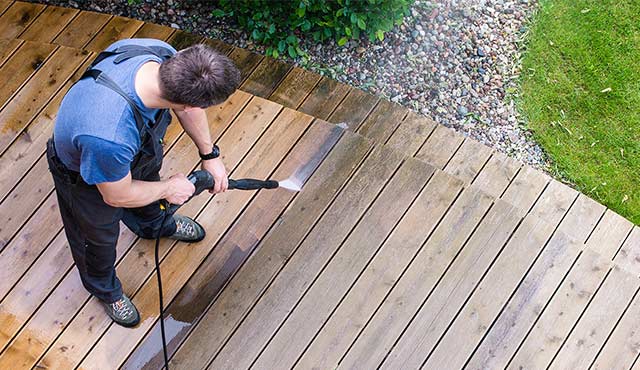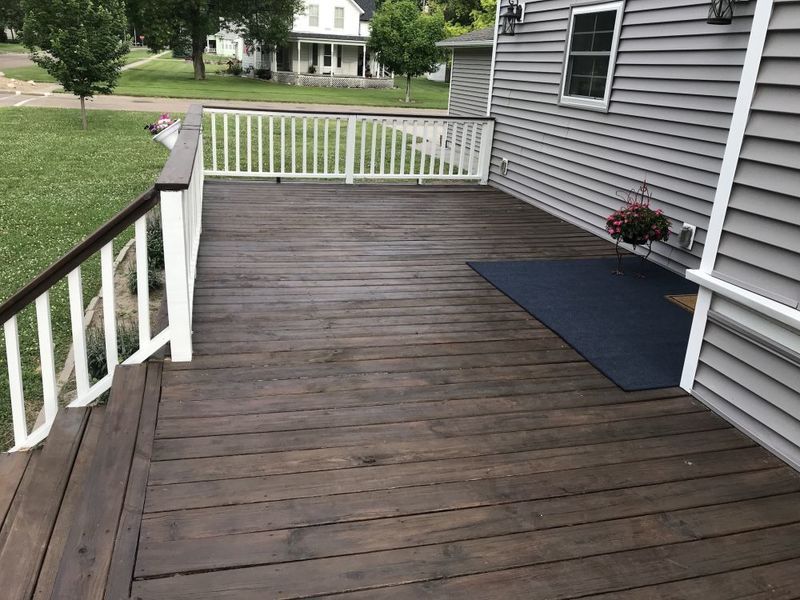Seal the Charm: Professional Fence Staining and Sealing Solutions
Wiki Article
Selecting the Right Spot for Your Fencing: Tips and Considerations
When it comes to enhancing the appearance and maintaining of your fencing, picking the best discolor is critical. We will certainly check out the various types of fencing stains, variables to think about before selecting a discolor, suggestions for preparing your fence for staining, and the differences between water-based and oil-based discolorations. In addition, we will certainly dive right into choosing the ideal stain color to enhance your fence and boost your exterior area.Comprehending Different Sorts Of Fencing Stains

On the various other hand, water-based stains are made from acrylic or latex and use an extra subtle color to the timber. They produce a safety movie externally of the timber, preventing dampness from permeating in and securing against UV damage. Water-based discolorations are easier to cleanse up and have a much faster drying out time contrasted to oil-based stains. They are additionally much less most likely to fade or split over time.
Selecting in between oil-based and water-based spots depends upon different factors, consisting of personal choice, the preferred appearance, and the level of maintenance required. Oil-based stains are recommended for surround high-traffic areas or those continuously subjected to severe weather. fence staining and sealing. Water-based discolorations, on the various other hand, are a preferred selection for fences in suburbs where look and ease of use are very important
When picking the ideal stain for their fence,Recognizing the differences between water-based and oil-based spots assists home owners make an informed decision. Thinking about the certain demands of the fence, such as its location, exposure to sunshine, and wanted visual, will certainly make sure that the chosen stain provides lasting defense and enhances the overall beauty of the fencing.
Aspects to Consider Prior To Picking a Stain

Various types of wood take in spots differently, resulting in varying levels of color strength and toughness. In addition, certain timbers may be more susceptible to problems like rot or insect invasion, which may impact the option of discolor to preserve the fence and safeguard.
The climate and weather in your area should also be thought about. You may require a discolor that provides added defense versus wetness and UV rays if you live in an area with rough wintertimes or high humidity. Also, if your fencing is subjected to direct sunshine for long durations, a discolor with UV inhibitors can assist avoid fading and staining.
Finally, it is essential to consider your preferred aesthetic. Various spots use different colors and finishes, permitting you to personalize the look of your fence (fence staining and sealing). Consider the total design and style of your property, in addition to any kind of neighborhood policies or home owner association standards that might dictate the appropriate tarnish colors
Tips for Preparing Your Fencing for Discoloration
Cleaning up the fencing is a vital action as it gets rid of dirt, crud, and any kind of previous finishings that may interfere with the discoloration process. Rub the surface area carefully, paying additional interest to areas with stubborn stains or mold and mildew.After cleansing, permit the fencing to dry completely. fence staining. This step is vital as discoloring a moist or wet surface can lead to poor attachment and an unequal surface. Depending on the weather problems, it may take anywhere from a few hours to a couple of days for the fencing to completely dry completely. Guarantee that the fence is completely dry prior to proceeding with the staining procedure.
Before staining, inspect the fencing for any problems, such as loose boards or nails. Fix any concerns to guarantee that the fence is structurally sound. Furthermore, consider using a timber conditioner or brightener to the surface. This item assists to open the wood pores, permitting the tarnish to permeate better and evenly.

Contrasting Water-Based and oil-based Discolorations
When choosing a tarnish for your fencing, it is essential to compare the qualities and advantages of oil-based and water-based discolorations. Both kinds of stains have their own benefits and considerations, so it is important to understand the differences between them.Oil-based stains are understood for their toughness and resistance to wear and tear. Additionally, oil-based stains tend to last longer than water-based discolorations, making them a preferred choice for fences.
On the various other hand, water-based discolorations are a lot more environmentally friendly and easier to cleanse up. They might not supply the very same degree of security as oil-based stains, especially in rough climate conditions.
Eventually, the selection in between water-based and oil-based stains depends on your certain requirements and preferences. When making your choice, consider variables such as toughness, environmental influence, and simplicity of application. Consulting with a professional or looking for recommendations from specialists can likewise help make sure that you choose the appropriate discolor for your fencing.
Selecting the Right Stain Color for Your Fence
The choice of a suitable tarnish shade for your fencing is an important facet of enhancing its visual appeal and matching the overall style of your exterior space (fence staining nashville tn). The right stain color can change a level, regular fence right into a striking focal point that adds deepness and personality to your propertyWhen picking a discolor color for your fencing, it is very important to take into consideration the design and architecture of your home. Earthy tones such as browns and neutrals can create a warm and inviting look if you have a standard or traditional design home. On the various other hand, if you have a modern or contemporary home, you might consider opting for bold and dynamic colors that make a statement.
Another variable to think about is the all-natural environments of your home. If you have a great deal of greenery, a tarnish shade that matches the all-natural landscape, such as environment-friendlies or crimsons, can produce a harmonious and natural look.
Furthermore, it deserves taking into consideration the maintenance required for different stain shades. Lighter colors tend to reveal dirt and pop over to this site wear more conveniently, while darker colors can hide blemishes and need much less regular touch-ups.
Ultimately, the choice of tarnish color for your fencing must show your individual style and preferences - fence staining companies. Put in the time to explore various options and get in touch with with professionals if needed, to make certain that you select the best tarnish shade that enhances the appeal and allure of your fence
Final Thought
Finally, when it concerns picking the right discolor for your fencing, it is essential to comprehend the various sorts of stains readily available and think about aspects such as resilience and preferred look. Preparing the fencing properly before staining is vital for attaining optimum results. Additionally, comparing water-based and oil-based discolorations can help identify the most effective choice for your certain requirements. Last but not least, selecting the best discolor color can enhance the overall appearances of your fencing.We will certainly explore the various types of fencing spots, elements to consider before choosing a tarnish, ideas for preparing your fence for staining, and the distinctions in between oil-based and water-based stains.Separating between oil-based and water-based spots is important when understanding various types of fencing spots. Water-based stains are much easier to clean up and have a much faster drying time contrasted to oil-based stains. In addition, oil-based spots often tend to last longer than water-based stains, making them a prominent option for fencings.
In final thought, when it comes to picking the right discolor for your fencing, it is essential to recognize the different kinds of discolorations available and think about variables such as longevity and desired appearance.
Report this wiki page